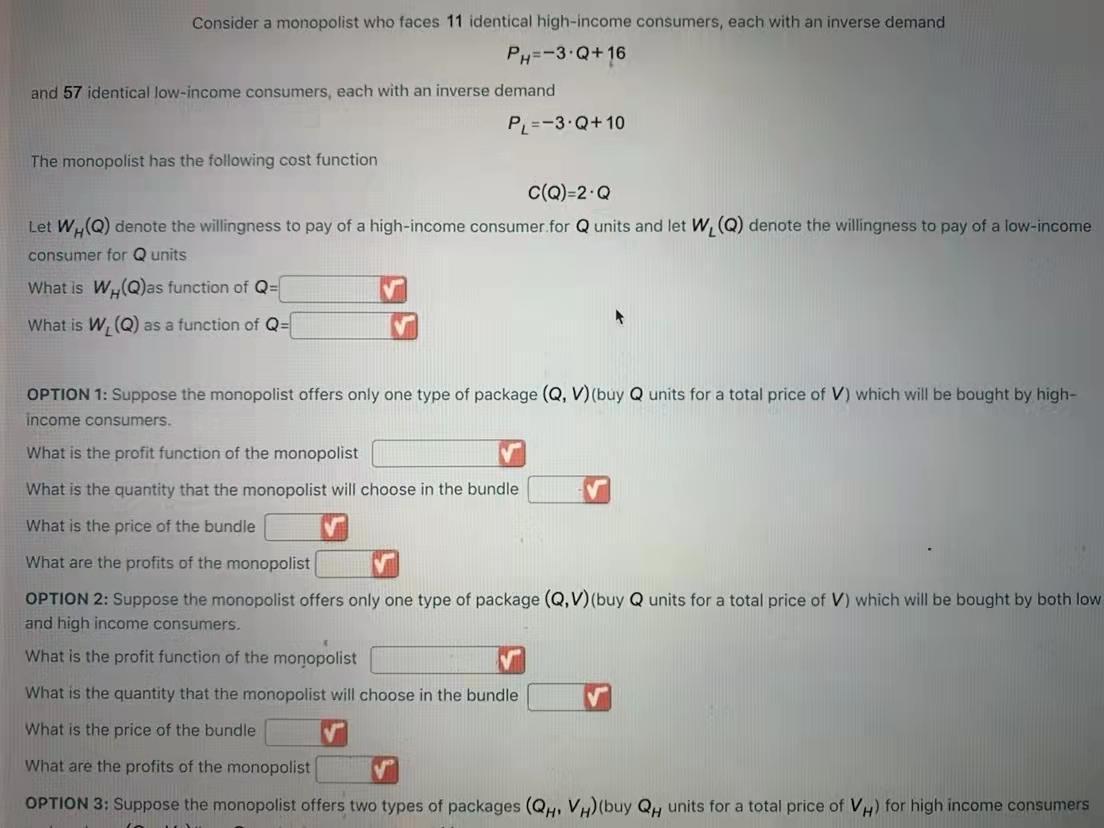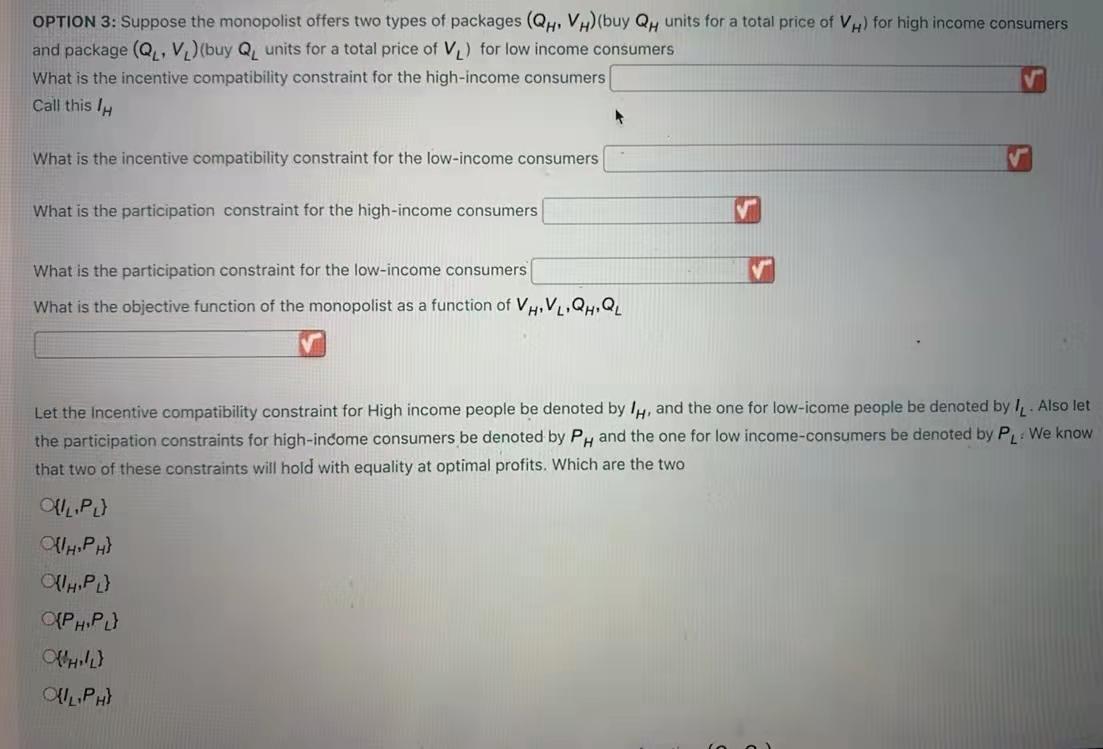Answered step by step
Verified Expert Solution
Question
1 Approved Answer
Consider a monopolist who faces 11 identical high-income consumers, each with an inverse demand PH=-3.Q+16 and 57 identical low-income consumers, each with an inverse



Consider a monopolist who faces 11 identical high-income consumers, each with an inverse demand PH=-3.Q+16 and 57 identical low-income consumers, each with an inverse demand The monopolist has the following cost function PL=-3.Q+10 C(Q)=2.Q Let W(Q) denote the willingness to pay of a high-income consumer.for Q units and let W (Q) denote the willingness to pay of a low-income consumer for Qunits What is W(Q)as function of Q= What is W (Q) as a function of Q= OPTION 1: Suppose the monopolist offers only one type of package (Q, V) (buy Q units for a total price of V) which will be bought by high- income consumers. What is the profit function of the monopolist What is the quantity that the monopolist will choose in the bundle What is the price of the bundle What are the profits of the monopolist OPTION 2: Suppose the monopolist offers only one type of package (Q,V) (buy Q units for a total price of V) which will be bought by both low. and high income consumers. What is the profit function of the monopolist What is the quantity that the monopolist will choose in the bundle What is the price of the bundle What are the profits of the monopolist OPTION 3: Suppose the monopolist offers two types of packages (QH, VH) (buy QH units for a total price of VH) for high income consumers OPTION 3: Suppose the monopolist offers two types of packages (QH, VH) (buy QH units for a total price of VH) for high income consumers and package (Q, V) (buy Q units for a total price of V) for low income consumers What is the incentive compatibility constraint for the high-income consumers Call this IH What is the incentive compatibility constraint for the low-income consumers What is the participation constraint for the high-income consumers What is the participation constraint for the low-income consumers What is the objective function of the monopolist as a function of VHVLQHQL Let the Incentive compatibility constraint for High income people be denoted by I, and the one for low-icome people be denoted by I. Also let the participation constraints for high-income consumers be denoted by PH and the one for low income-consumers be denoted by P: We know that two of these constraints will hold with equality at optimal profits. Which are the two OIL.PL) {lH.PH} O{/H.PL} O{PH+PL} OHILL} OLPH} Given the binding constraints above, what would the profit function become as a function (Q.QL) What is the quantity offered by the monopolist to high-income consumers What is the quantity offered by the monopolist to low-income consumers What are the profits of the monopolist from these bundles Which option yields the highest profits for the monopolist COption 3 Coption 2 and what is the bundle price dictated by the monopolist Vand what is the bundle price dictated by the monopolist OOption 1 Now suppose that the monopolist was mistaken in the number of low income consumers and specifically the number of low income consumers was not estimated correctly. In order for the monopolist to still choose the same option as above, what should the proportion of low income to high income consumers be greater than Finally, if the proportion of low to high income consumers is smaller than above, which Option will maximizes the monopolist's profits COption 2 COption 3 COption 1
Step by Step Solution
★★★★★
3.52 Rating (169 Votes )
There are 3 Steps involved in it
Step: 1
To find the willingness to pay for highincome consumers WQ we need to substitute the inverse demand equation for highincome consumers PH into the formula PH 3 Q 16 WQ PH CQ 3 Q 16 2 Q Q 11 Therefore t...
Get Instant Access to Expert-Tailored Solutions
See step-by-step solutions with expert insights and AI powered tools for academic success
Step: 2

Step: 3

Ace Your Homework with AI
Get the answers you need in no time with our AI-driven, step-by-step assistance
Get Started


